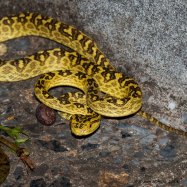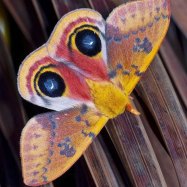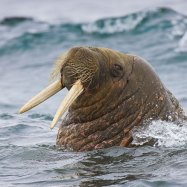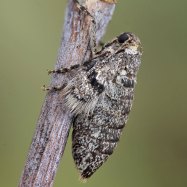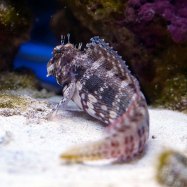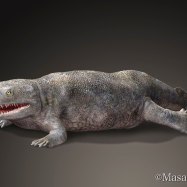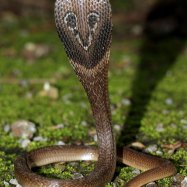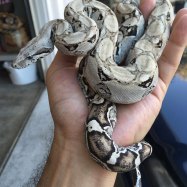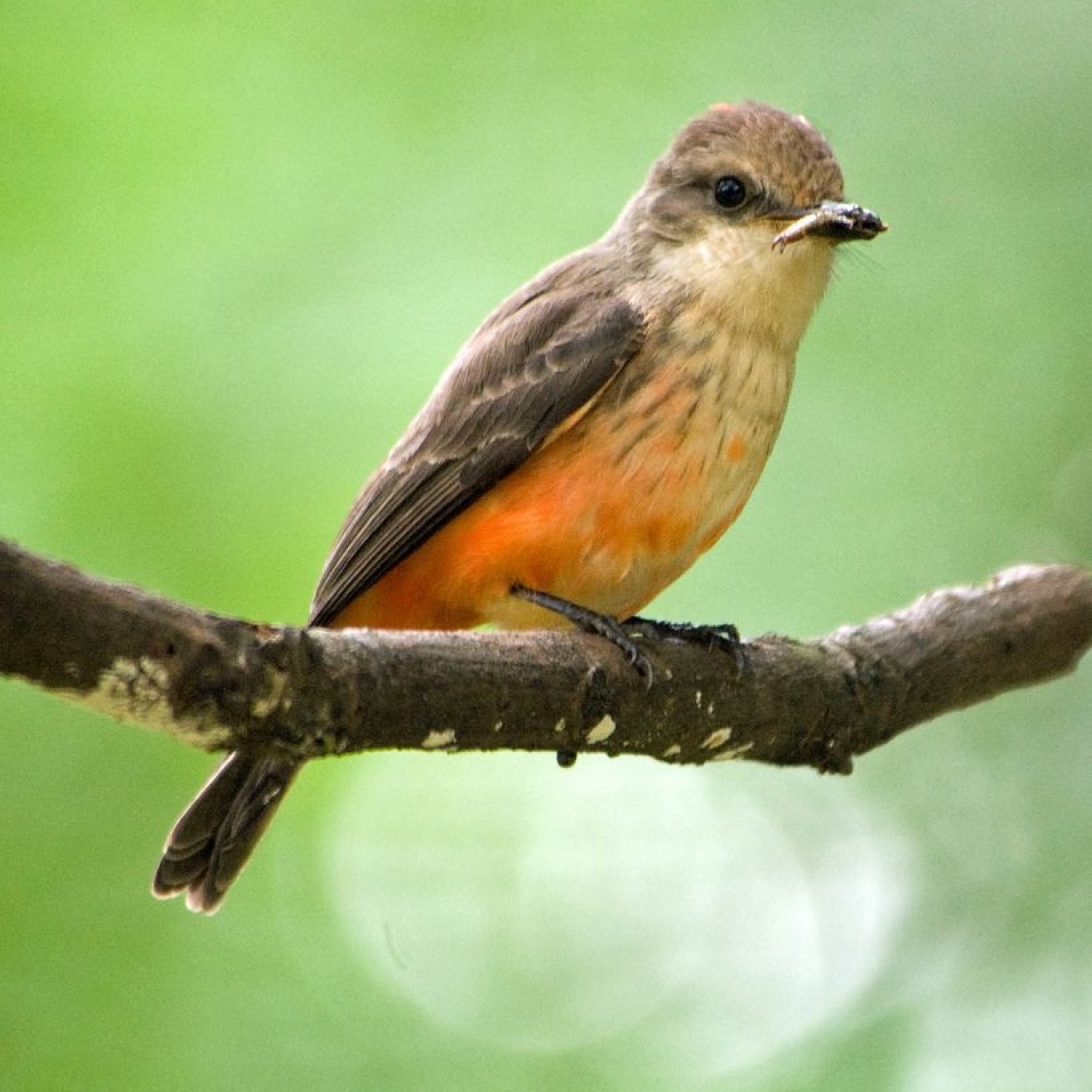
Vermilion Flycatcher
14-16 cm (5.5-6.3 inches)
The Vermilion Flycatcher, a small bird with a slender body and long tail, can be found in North America, Central and South America. It belongs to the Tyrannidae family and measures 14-16 cm (5.5-6.3 inches) in length. Keep an eye out for this colorful bird on your next nature walk! #VermilionFlycatcher #Tyrannidae #birdwatching #NorthAmerica #CentralAmerica #SouthAmerica
Animal Details Summary:
Common Name: Vermilion Flycatcher
Kingdom: Animalia
Habitat: Open areas, including grasslands, deserts, and savannas
The Stunning Vermilion Flycatcher: A Small Bird with a Striking Appearance
The world is filled with a wide variety of birds, from the majestic bald eagle to the tiny hummingbird. Each species is unique and has its own distinct characteristics that make them stand out. However, there is one bird that truly captures the attention of anyone fortunate enough to spot it - the Vermilion Flycatcher.With its striking and vibrant red plumage, the Vermilion Flycatcher is a small bird that immediately catches the eye Vermilion Flycatcher. Also known as Pyrocephalus rubinus in the scientific world, this beautiful creature belongs to the animal kingdom, phylum Chordata, and class Aves. It is a member of the family Tyrannidae, commonly known as tyrant flycatchers, and is part of the passerine order, Passeriformes.
Found in open areas such as grasslands, deserts, and savannas, the Vermilion Flycatcher is a true marvel of nature. In this article, we will delve deeper into this fascinating bird's habitat, behavior, and features that make it stand out among other avian species.
The Vermilion Flycatcher's Habitat: A Home in Open Spaces
The Vermilion Flycatcher is primarily found in the southwestern United States, including Arizona, New Mexico, and Texas, but can also be seen in Central and South America. Its country of origin is Mexico, where it can be spotted in the northern and central regions.These birds prefer open areas, particularly grasslands and fields near water sources such as rivers and streams, where they can find an abundance of insects to feed on. They are also commonly found in desert habitats and savannas, making their home in areas with sparse trees and shrubs.
Despite being seen in urban and suburban areas, the Vermilion Flycatcher prefers open spaces with less human activity Vizsla. They are also known to migrate, with some individuals traveling as far south as Argentina during the winter months.
A Hunter of Insects: The Vermilion Flycatcher's Feeding Method
The Vermilion Flycatcher is classified as an insectivorous bird, which means that its diet primarily consists of insects. Being part of the tyrant flycatcher family, they have developed a unique hunting style to catch their prey.These birds are known to perch on low branches, fence posts, or even on the ground, watching and waiting for their food to pass by. Once spotted, they fly out to catch it in mid-air using their sharp, hooked beaks. Some of their favorite meals include beetles, flies, grasshoppers, and moths.
Their feeding style is not only limited to flying insects; they are also known to hunt on the ground, capturing spiders, caterpillars, and other small creatures. This varied diet makes them adaptable and able to thrive in various habitats.
A Winning Combination: The Vermilion Flycatcher's Geographical Distribution
The Vermilion Flycatcher may be a small bird, but its geographical distribution is quite impressive. As mentioned earlier, it can be found in the United States, Mexico, Central, and South America, making it a widespread species.In the United States, they are mostly seen in the southwestern states, while in Mexico, they can be found in the northern and central regions. In Central America, they are commonly spotted in countries such as Belize, Costa Rica, and Nicaragua. In South America, they can be seen in Colombia, Venezuela, and even Argentina.
This wide distribution is a testament to the adaptability and resilience of these birds, as they can thrive in different environments and climates.
The Vermilion Flycatcher's Appearance: A Touch of Boldness and Beauty
One of the most striking features of the Vermilion Flycatcher is its vibrant red color. The males sport a brilliant red plumage on their head, neck, and chest, while their wings and tail feathers are a striking black. Females, on the other hand, have a pale red coloration, with a grey-brown color on their back and wings.Both males and females have a small crest on their heads, although it is more prominent in males. Their beaks are black, and their eyes are dark brown. They also have long, slender tails, giving them a sleek and elegant appearance.
At first glance, one may mistake these birds for cardinals due to their similar red coloration, but upon closer inspection, the Vermilion Flycatcher's unique features become more apparent.
A Small but Mighty Bird: The Vermilion Flycatcher's Body Shape and Size
The Vermilion Flycatcher may be small, measuring only 14-16 cm (5.5-6.3 inches) in length, but it is a mighty hunter. They are lightweight, weighing only 9-12 grams (0.3-0.4 ounces), making them agile and swift in flight.Their body shape is slender, with a slightly curved appearance, and their wings are narrow, perfect for quick and precise movements. Their long, forked tails help with balance and maneuverability, allowing them to dart and dive while hunting insects.
A Bird with a Cultural Connection
In some cultures, the Vermilion Flycatcher holds special meaning and significance. In the Mayan civilization, this bird was associated with love and was believed to guide lost lovers back to each other. In present-day Mexico, the bird is often considered a symbol of beauty and is often featured in traditional artwork and handicrafts.In Native American culture, the Vermilion Flycatcher is seen as a messenger from the world of spirits. It is also believed to represent the never-ending cycle of nature and the importance of balance and harmony.
These cultural connections only add to the mystique and allure of this remarkable bird.
The Threats and Conservation Efforts for the Vermilion Flycatcher
While the Vermilion Flycatcher may seem like a resilient and adaptable species, it is not immune to threats and challenges. In the past, these birds were hunted for their bright red feathers, which were used in the millinery industry for women's hats. This practice led to a decline in their population.Today, urbanization, habitat loss, and climate change pose significant risks to these birds. The use of pesticides in farming also affects their food sources, as they feed on insects that may have come into contact with these chemicals.
To protect and conserve this beautiful species, organizations such as the National Audubon Society and the International Union for Conservation of Nature (IUCN) have implemented conservation efforts. These include habitat restoration, protected areas, and public awareness programs to educate people about the importance of preserving these birds and their habitats.
In Conclusion
The Vermilion Flycatcher is undoubtedly a stunning and captivating bird. Its bright red coloration, unique hunting style, and cultural significance make it stand out among other avian species. However, beyond its beauty, this bird also serves as a reminder of the delicate balance and interconnectedness of nature.Through conservation efforts and responsible actions, we can ensure that this magnificent bird continues to grace our skies and open spaces for generations to come. So, the next time you spot a Vermilion Flycatcher, take a moment to appreciate its beauty and remember the importance of protecting our planet and all its inhabitants.

Vermilion Flycatcher
Animal Details Vermilion Flycatcher - Scientific Name: Pyrocephalus rubinus
- Category: Animals V
- Scientific Name: Pyrocephalus rubinus
- Common Name: Vermilion Flycatcher
- Kingdom: Animalia
- Phylum: Chordata
- Class: Aves
- Order: Passeriformes
- Family: Tyrannidae
- Habitat: Open areas, including grasslands, deserts, and savannas
- Feeding Method: Insectivorous
- Geographical Distribution: Southwestern United States, Central and South America
- Country of Origin: Mexico
- Location: North America, Central and South America
- Animal Coloration: Vibrant red color on males, while females have a pale red plumage
- Body Shape: Small bird with a slender body and long tail
- Length: 14-16 cm (5.5-6.3 inches)
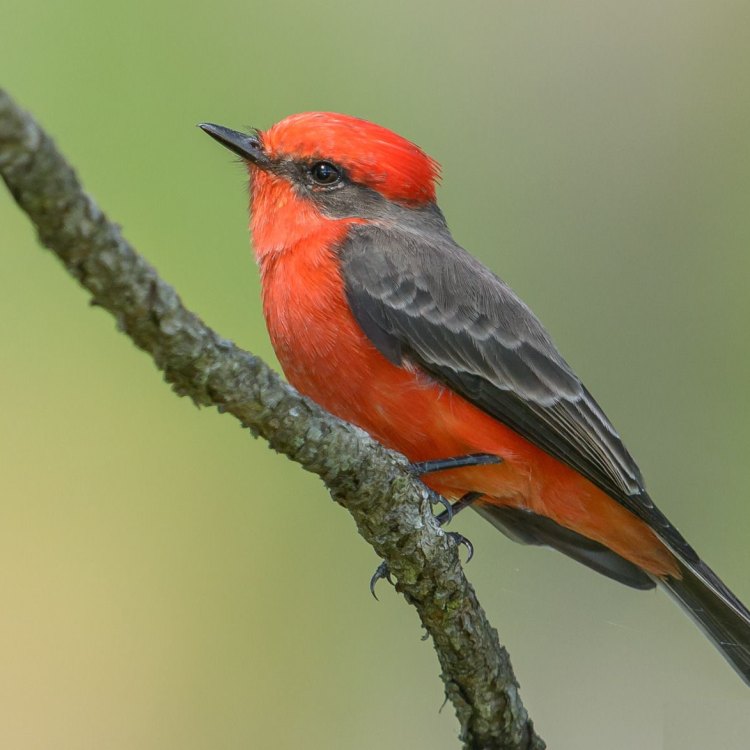
Vermilion Flycatcher
- Adult Size: Small
- Average Lifespan: 5-7 years
- Reproduction: Sexual
- Reproductive Behavior: Male performs courtship displays including elaborate flight displays
- Sound or Call: High-pitched song consisting of whistles and trills
- Migration Pattern: Partially migratory, with some populations being resident and others migratory
- Social Groups: Solitary or form small groups outside of the breeding season
- Behavior: Active and agile flyers, often seen perched on fences, shrubs, or wires while hunting for insects
- Threats: Habitat loss, human disturbance, pesticides, predation
- Conservation Status: Least Concern
- Impact on Ecosystem: Important insect controllers
- Human Use: Birdwatching
- Distinctive Features: Male has bright red plumage, long tail feathers, and a black mask on its face
- Interesting Facts: The Vermilion Flycatcher is known for its stunning red coloration and elaborate courtship displays. They are also one of the few bird species in which the male is more brightly colored than the female.
- Predator: Birds of prey, snakes, and mammals
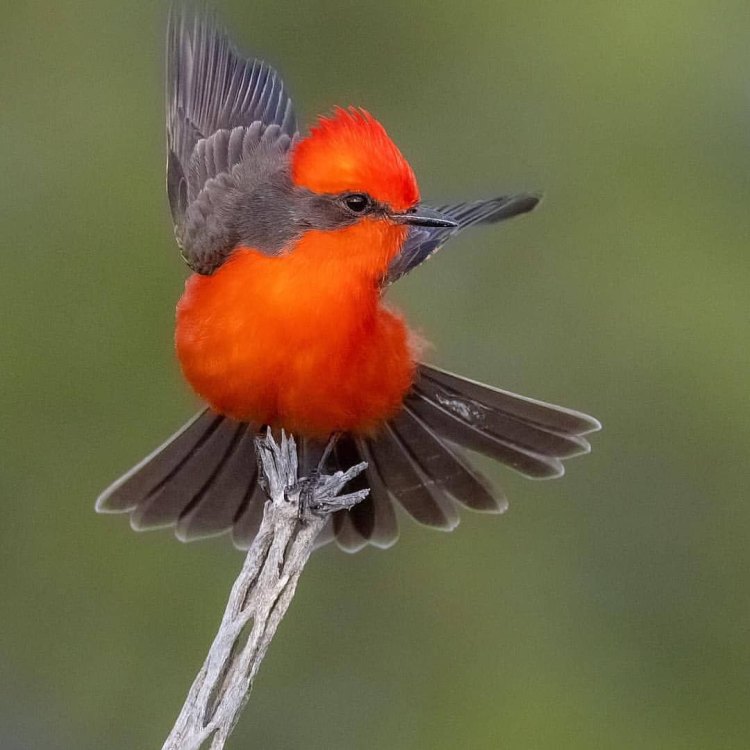
Pyrocephalus rubinus
The Dazzling Vermilion Flycatcher: A Bird of Beauty and Brains
When you think of birds, the image of a small, colorful and chirpy creature comes to mind. But the Vermilion Flycatcher breaks all stereotypes when it comes to the bird world. This stunning songbird with its bright red plumage and impressive aerial displays is a sight to behold. Native to the Americas, the Vermilion Flycatcher has captured the attention of bird watchers, conservationists, and nature enthusiasts for its unique behavior and features PeaceOfAnimals.Com. In this article, we will dive into the world of this fascinating species, uncovering its distinctive characteristics, behavioral traits, and impact on the ecosystem.Size and Lifespan
The Vermilion Flycatcher is a small bird, measuring about 5-6 inches in length and weighing around 0.4-0.6 ounces. Despite its small size, this bird is a mighty hunter, known for its agility and maneuverability in the air. They are active flyers, often seen darting through the air, chasing and catching insects on the wing.On average, these birds have a lifespan of 5-7 years. However, some individuals have been known to live up to 10 years in the wild. Their short lifespan is due to various threats, including human disturbances and predation Vampire Crab.
Sexual Reproduction and Courtship Behavior
Like most birds, Vermilion Flycatchers reproduce sexually, with males and females coming together for the sole purpose of mating. During the breeding season, which typically lasts from March to July, the male Vermilion Flycatcher performs elaborate courtship displays to attract a female. These displays involve flying high in the sky, chasing after the female, and diving back down in a series of acrobatic maneuvers. The male also sings a high-pitched song consisting of whistles and trills to woo its potential mate.If the female is impressed, she will choose a suitable nesting site, which is usually a small cup-shaped structure made of grass, feathers, and other materials. She then lays a clutch of 2-4 eggs, which both parents take turns incubating for about 13-14 days. Once the eggs hatch, the parents continue to share the responsibilities of feeding and caring for the chicks.
Distinctive Features
The male Vermilion Flycatcher is undoubtedly the showstopper with its brilliant red plumage, long tail feathers, and a contrasting black mask on its face. The female, on the other hand, has a duller appearance, with grey-brown feathers and a reddish tinge on her underside. This unique color difference between the sexes is known as sexual dimorphism and is rare among bird species.Another distinctive feature of the Vermilion Flycatcher is its long tail feathers, which are specifically adapted for its flying and hunting abilities. These tail feathers help it to make sharp turns and sudden stops in mid-air, making it a formidable hunter.
Migratory Pattern and Social Behavior
The Vermilion Flycatcher is a partially migratory species, with some populations being resident while others are migratory. These birds can be found in the southwestern United States, Mexico, Central America, and parts of South America, depending on the time of the year. During the breeding season, they are typically found in grasslands, desert scrub, and open woodlands, while during the winter months, they often move to wetlands and coastal areas.These birds are predominantly solitary, with males fiercely defending their territories during the breeding season. However, outside of the breeding season, they may form small groups while foraging or roosting. They are also highly territorial, and it is not uncommon for males to aggressively chase away other males from their territories.
Behavior and Threats
As mentioned earlier, the Vermilion Flycatcher is a highly active and agile flyer, constantly on the lookout for insects to hunt. They can often be seen perched on fences, wires, or shrubs, waiting for their prey to fly by. Once spotted, they quickly take flight, darting through the air and swiftly catching their prey with their sharp beaks.Despite their impressive aerial abilities, the Vermilion Flycatcher faces multiple threats in its environment. Habitat loss due to urbanization, agriculture, and deforestation is a significant threat to these birds. Human disturbance, such as recreational activities and land development, can also disrupt their breeding and foraging behaviors. Pesticides and predation by larger bird species, snakes, and mammals also pose a threat to their survival.
Conservation Status and Impact on the Ecosystem
According to the International Union for Conservation of Nature (IUCN), the Vermilion Flycatcher is currently listed as Least Concern, with stable population trends. This is good news for these birds, as their populations were previously declining due to extensive habitat destruction and other threats. However, conservation efforts, such as protection of suitable habitats and regulation of pesticide use, have helped in maintaining their populations.Apart from their aesthetic value, Vermilion Flycatchers also play a crucial role in their ecosystem. As insectivores, they help in controlling the population of insects, making them essential for maintaining a balance in the ecosystem.
Human Use and Interesting Facts
The Vermilion Flycatcher is not only useful in the ecosystem but also has a significant appeal to humans. They are popular among bird watchers, who are captivated by their stunning appearance and interesting behaviors. Many birdwatching tours and events are organized worldwide to spot and observe these beautiful birds in their natural habitat.One of the most interesting facts about this species is that the male Vermilion Flycatcher is one of the few bird species in which the male is more brightly colored than the female. This is usually seen in male birds that perform elaborate courtship displays to attract females, as is the case with the Vermilion Flycatcher.
Predators
Like any other bird, the Vermilion Flycatcher also has its share of predators in the wild. They are often hunted by birds of prey, including hawks and owls, who see them as potential prey. Snakes and mammals, such as cats and raccoons, also pose a threat to these birds and their nests.In conclusion, the Vermilion Flycatcher, with its dazzling red plumage and unique behaviors, is a truly remarkable bird of the Americas. While its populations face threats, conservation efforts and human appreciation of their beauty and importance in the ecosystem can help in their continued survival. So the next time you come across this striking bird, take a moment to admire its beauty and appreciate its contribution to our natural world.
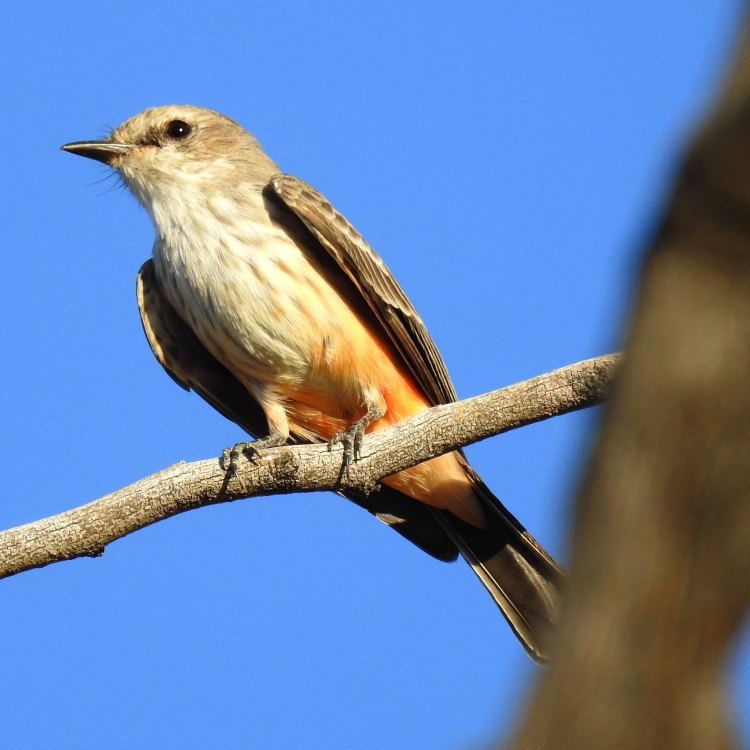
The Stunning Vermilion Flycatcher: A Small Bird with a Striking Appearance
Disclaimer: The content provided is for informational purposes only. We cannot guarantee the accuracy of the information on this page 100%. All information provided here may change without prior notice.

